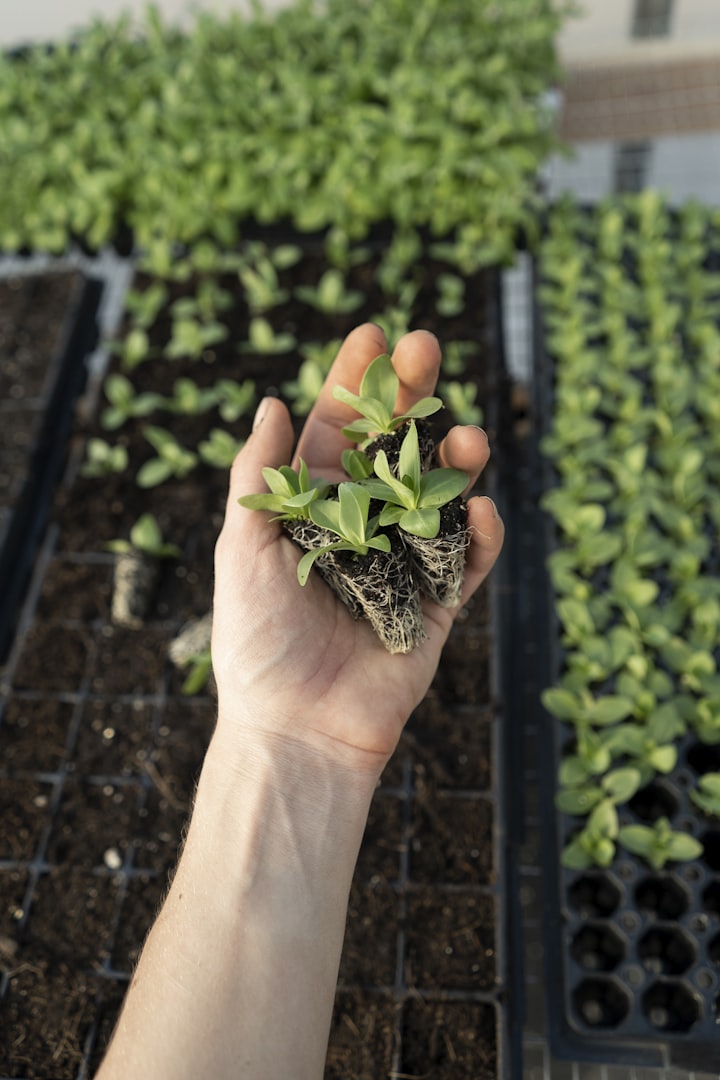Unveiling the Future: Vertical Farming's Revolution in Food Sustainability
"Transforming food sustainability: The Revolution of vertical farming

Unveiling the Future: Vertical Farming's Revolution in Food Sustainability
Vertical farming is an innovative and promising concept that has the potential to transform the way we produce food. In a world facing challenges of population growth, land scarcity, and climate change, vertical farming offers a sustainable solution to address global food security and environmental concerns. By stacking crops vertically in controlled environments, this technique maximizes land-use efficiency and reduces the need for traditional agricultural practices.
Did you know? By 2050, the global population is projected to reach a staggering 9.7 billion, placing immense pressure on our limited agricultural resources. Traditional farming methods are already struggling to keep pace, facing challenges like:
Climate change: Rising temperatures, erratic weather patterns, and increased droughts threaten crop yields worldwide. A 2021 study published in Nature Food found that climate change could reduce global crop yields by 17% by 2050.
The 17th century saw the development of greenhouses, which allowed for the cultivation of plants under controlled conditions. These early greenhouses were primarily used for growing exotic fruits and flowers, but they laid the groundwork for the development of controlled-environment agriculture (CEA), a key element of modern vertical farming.
The 20th century witnessed significant advancements in agricultural technology, including the development of soilless farming techniques like hydroponics and aeroponics. These methods, which eliminate the need for soil, paved the way for the intensive vertical farming systems we see today.
In this article, we’ll explore the world of vertical farming, its benefits and challenges, and how Gel Ponies plays a pivotal role in this agricultural revolution.
In the 21st century, vertical farming has experienced a surge in interest and investment. This is due in part to growing concerns about food security, climate change, and resource scarcity. As the global population continues to rise and traditional farming methods face increasing challenges, vertical farming is emerging as a potential solution for meeting the demands of a growing world.
Key Concepts and Definitions
Understanding the Principles and Techniques of Vertical Farming
Vertical farming can be defined as the practice of cultivating plants in vertically stacked layers or structures, often utilizing hydroponics or aeroponics systems. Controlled environment agriculture ensures optimal conditions for plant growth, including temperature, humidity, and lighting.
Benefits of vertical farming:

Reduced Water Usage and Pesticide Reliance: Vertical farming utilizes recirculating water systems, which require significantly less water compared to traditional agriculture. Furthermore, the controlled environments in vertical farms minimise the need for pesticides.
Sustainability: Vertical farming reduces agriculture’s carbon footprint. Gel Ponies, being 100% natural and biodegradable, aligns perfectly with this sustainability goal.
Space Efficiency: Vertical farms occupy less space, making them ideal for urban areas.
Year-Round Cultivation: Climate-controlled environments allow for year-round crop production.
Innovations in Vertical Farming Practices: Vertical stacking and modular systems are innovative practices in vertical farming. Vertical stacking involves growing different crops on top of each other, maximizing space utilization. Modular systems allow for easy assembly and disassembly of vertical farming units, enabling scalability and flexibility in design.
Plantagon in Sweden: Plantagon combines vertical farming with architecture, creating multi-story buildings that integrate food production and urban living.
Investment and Funding Trends: The vertical farming industry has witnessed significant investment and funding, indicating growing interest and confidence in the sector.
Challenges of vertical farming
Energy Consumption: Maintaining controlled environments can be energy-intensive.
Crop Selection: Not all crops are suitable for vertical farming.
Skepticism about Economic Feasibility and Long-term Sustainability: Some critics question the economic feasibility and long-term sustainability of vertical farming.
Future Outlook
The Promising Future of Vertical Farming
Role in Achieving Global Food Security and Sustainable Development Goals: Vertical farming has the potential to play a significant role in achieving global food security and sustainable development goals.
Anticipated Growth and Evolution: As technology advances and awareness of the environmental and social benefits of vertical farming increases, the industry is expected to experience substantial growth.
Where are vertical farms located?
Vertical farms can be found in urban areas worldwide, often in repurposed buildings or custom-built structures.
Vertical farming is poised to be crucial in addressing food security challenges. As the world’s population grows, kj increases, and climate change impacts traditional agriculture . Vertical farming offers a sustainable and reliable source of fresh produce, while Gel Ponies contributes to minimizing its environmental impact.
Conclusion
Vertical Farming: The Next Green Revolution
In conclusion, vertical farming presents a promising solution to address the challenges of global food security and sustainability. Real-world case studies demonstrate the successful implementation of vertical farming in various locations, showcasing its viability and benefits. While challenges and controversies exist, ongoing research, investment trends, and technological advancements indicate a bright future for vertical farming. It is imperative to recognize the significance of vertical farming in creating a more sustainable and resilient food system for future generations.





Comments (1)
As the creator of the article, I am excited to showcase the revolutionary potential of vertical farming in addressing pressing issues of food sustainability. Through extensive research and analysis, I aim to provide readers with valuable insights into the transformative impact of this innovative agricultural approach. I hope to inspire discussion and awareness about the importance of embracing such technologies for a more sustainable future.